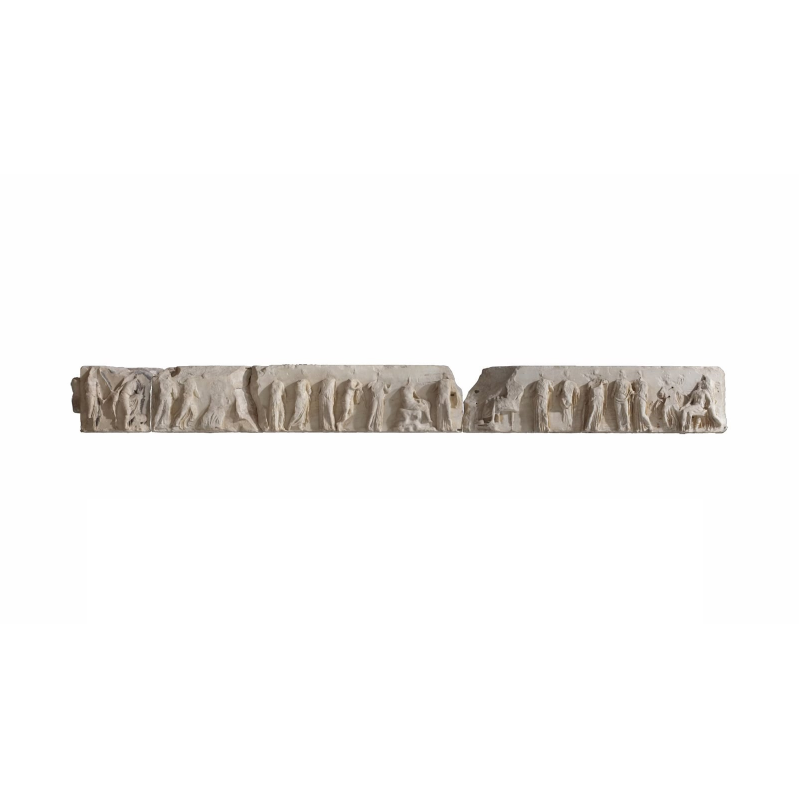THEMATIC SECTION
The Temple of Athena Nike
The temple of Athena Nike, designed by the architect Kallikrates, was built between 426 and 421 BC on a bastion at the southwestern edge of the Acropolis. It replaced older temples whose remains are preserved inside the bastion.
The small Ionic temple had a relief-carved frieze with different thematic representations on each side. On the east was shown a gathering of gods around the enthroned Zeus, while the other sides presented scenes of war between Greeks and Persians or Greeks with other Greeks. The south side depicted the victorious battle of the Greeks against the Persians at Marathon in 490 BC, led by the Athenians.
Few sculptural remains are preserved from the temple’s pediments. It is believed the west pediment depicted the victory of the Olympian gods against the Giants (Gigantomachy), while the east depicted the victory of the Athenians against the Amazons (Amazonomachy).
Around 410 BC, a marble parapet, adorned with carved reliefs, was installed around the dangerous edge of the temple’s bastion for the protection of visitors. The reliefs showed the seated goddess Athena resting, after victorious battles, as she watches winged Nikes leading bulls to sacrifice or holding weapons and decorating victory trophies with Greek or Persian armour.













